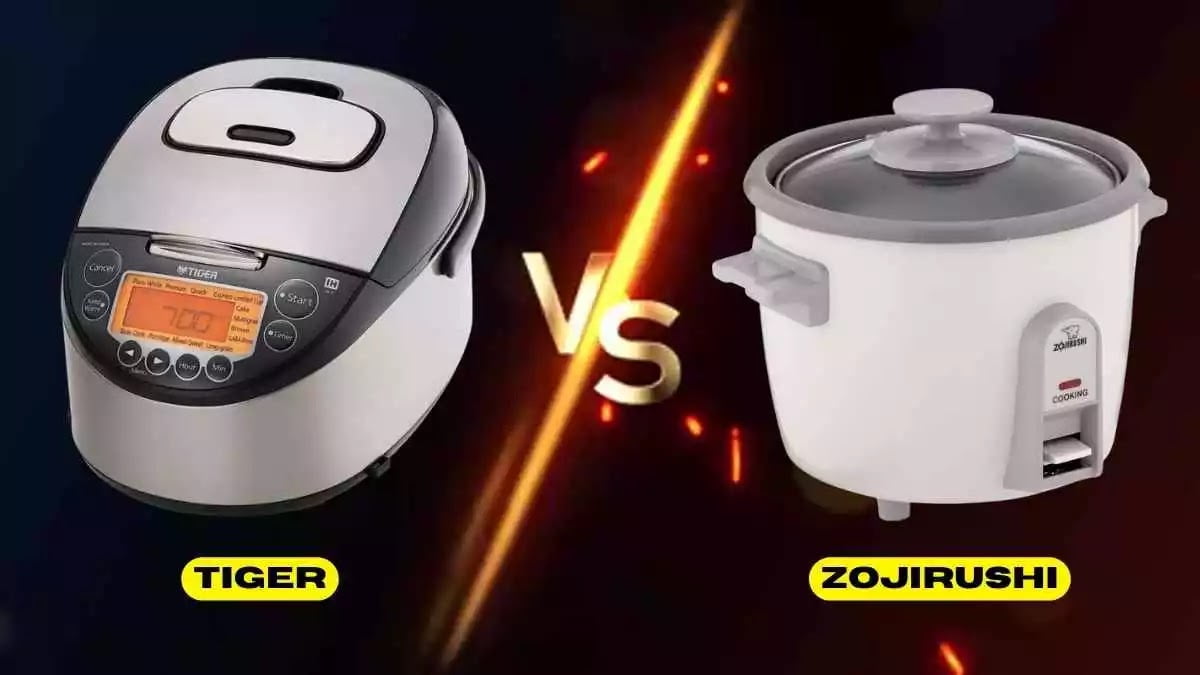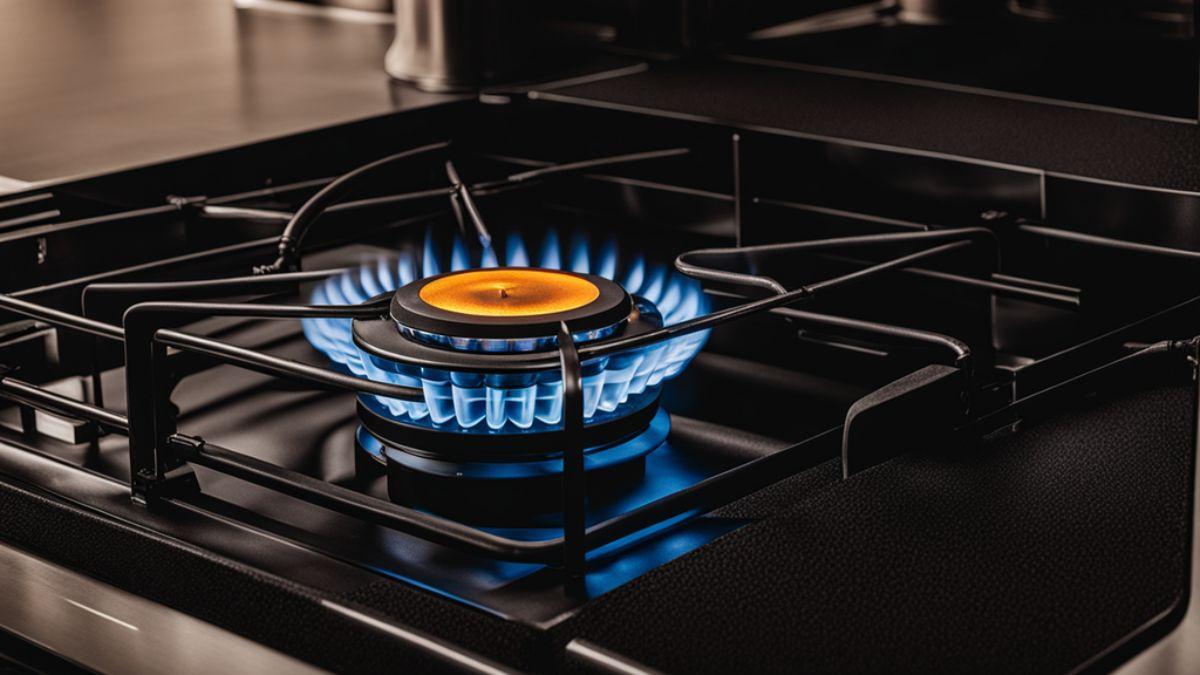
We may earn money or products from the companies mentioned in this post.
Both Tiger and Zojirushi are highly-regarded brands of rice cookers, but which one is right for you? Compare their features, price, and performance to make the best decision for your needs.
Have you ever argued over a Zojirushi or Tiger rice cooker? It’s not just you. When it comes to cooking rice, these two brands are regarded as the best, but how can you make a decision? It’s likely that if you’re shopping for a new rice cooker, you want one that will continue to produce fluffy, light rice for many years to come. Which of Tiger and Zojirushi—whose excellent quality and performance are well-known—will best meet your needs?
Overview of Tiger and Zojirushi Rice Cooker Brands
When it comes to reliable rice cookers, Tiger and Zojirushi are two of the top brands. Both are highly rated, but which one is right for you depends on your needs and budget.
Tiger Rice Cookers
Tiger Corporation is a Japanese company that’s been making rice cookers since the 1920s. Tiger rice cookers are affordable, and durable and come in a range of sizes. The 5.5-cup is great for small households, while the 10-cup version can feed a crowd.
Check Price Tiger Rice Cookers on Amazon
Tiger’s basic models are simple to use with just a single switch to operate. Higher-end versions offer delay timers, keep-warm functions, and built-in dispensers for steaming vegetables and grains. Most Tiger rice cookers also play a little tune when your rice is ready.
While very budget-friendly, some find Tiger rice cookers lack certain features of pricier brands. But for reliable, no-fuss rice cooking on a budget, Tiger is a solid choice.
Zojirushi Rice Cookers
Zojirushi is another trusted Japanese brand that’s been perfecting rice cookers since the 1950s. Zojirushi rice cookers are high quality, with prices to match. Their models range from 3-cup up to 20-cup, with Zojirushi’s signature thick inner cooking pan that produces light, fluffy rice.
Check Price Zojirushi Rice Cookers on Amazon
Zojirushi rice cookers offer high-tech features like LCD displays, delay timers, reheat functions, and spherical inner cooking pans for even heating. Many Zojirushi models produce rice that stays fresh for up to five days. Zojirushi is definitely an investment, but will last for many years and suit serious rice lovers.
In the end, both Tiger and Zojirushi produce excellent rice cookers. Tiger is ideal if you’re on a budget, while Zojirushi is worth the splurge if you want advanced features and restaurant-quality rice at home. The choice is yours!
Key Features Comparison: Cooking Capacity, Settings, Design
When it comes to rice cookers, Tiger and Zojirushi are two of the top brands. But how do you choose between them? Let’s compare some of their key features to help you decide.
Cooking capacity
- Tiger cookers typically range from 3 to 10 cups, suitable for small to large families. Zojirushi also offers a range of sizes from 3 to 10 cups. For most people, a 5 to 8-cup model is ideal.
- Both brands offer cookers for specific types of rice like brown, jasmine, or sushi rice in various cup sizes. So think about the kind of rice you eat most and how much capacity you need.
Cooking settings
- Tiger cookers usually have basic settings for white, brown, and quick rice. Some higher-end models offer additional settings for porridge, cake, and slow cooking.
- Zojirushi cookers are known for more advanced cooking settings. Many models have settings for white, sushi, porridge, sweet, mixed, rinse-free, and quick rice. Some even have settings for oatmeal, cake, and slow cook. If you want more versatility, Zojirushi may have an edge.
Design
- Tiger cookers typically have a simple, minimalist design. Most have an aluminum cooking bowl and a tempered glass lid. Higher-end models may have a stainless steel exterior.
- Zojirushi cookers often have a sleek, modern look with stainless steel cooking bowls and a tempered glass lid. Many models have an LCD display, retractable cord, and handle for easy transport. Zojirushi places more emphasis on design and quality materials.
In the end, both Tiger and Zojirushi make excellent, high-quality rice cookers. Think about your needs and priorities to choose a brand and model that’s right for you. When in doubt, you can’t go wrong with either!
Performance: Cooking Results, Durability, and Ease of Use
When it comes to performance, both Tiger and Zojirushi rice cookers work great but have some key differences.
Cooking Results
Tiger’s “cook” cooking plate provides even heating for consistent results, while Zojirushi’s microcomputer chips precisely control temperature and time. Either brand will produce light, fluffy rice that’s not sticky or burnt. For variety, both offer settings for brown rice, porridge, and GABA rice. Zojirushi’s models typically have more menu options, including cake and bread functions.
Durability
These rice cookers are built to last. Tiger’s cookers feature heavy-duty stainless steel construction and Zojirushi is known for outstanding quality and reliability. With proper care and maintenance like rinsing off stuck-on bits after each use and wiping down exterior surfaces, you can expect either brand to provide many years of service. Replacement parts are available directly from the manufacturers if needed down the road.
Ease of Use
Both brands are user-friendly but in slightly different ways. Tiger’s models are very straightforward, with clearly marked buttons and minimal complexity. Zojirushi takes a more high-tech approach with digital timers, delayed start options, and programmed memory settings. Their models have more parts like detachable lids and nonstick coating interiors that require hand washing. Zojirushi’s models may have a slight learning curve but their automatic keep warm, extended keep warm, and reheating cycle features make operation convenient.
In the end, you can’t go wrong with either Tiger or Zojirushi. Compare specific models in your price range based on your priorities for cooking results, durability, ease of use, or other features. With the right care and maintenance, a high-quality rice cooker from either of these reputable brands will serve you well for years to come.
Pricing: Budget-Friendly vs Premium Models
When it comes to price, Tiger and Zojirushi rice cookers cater to both budget-conscious and premium shoppers.
Budget-Friendly Models
If you’re on a tight budget, Tiger’s basic models offer solid performance at lower price points, typically ranging from $30 to $60. The Tiger JBV-A10U, for example, is a simple but well-rated cooker that makes up to 5.5 cups of rice for under $50. While very affordable, these cookers typically have basic features and may require more monitoring to get the best results.
Mid-Range and Premium Options
For higher quality and more consistent performance, expect to pay $100-$200 for a Tiger or Zojirushi rice cooker. Models like the Zojirushi NS-TSC10 and Tiger Corporation JKT-S10U offer convenient features like delay timers, keep-warm functions, and built-in menus for cooking different rice varieties. Zojirushi’s higher-end models, such as the NP-HCC10XH Induction Heating System Rice Cooker and Warmer, provide premium build quality, induction heating for precise temperature control, and restaurant-quality results. However, these luxury models typically start around $250-$500.
In the end, determining a budget and assessing how much you’re willing to spend for features and performance is key to choosing between Tiger and Zojirushi. While Zojirushi is generally known for higher quality and more advanced cookers overall, Tiger also offers solid, reliable, and affordable options for any budget. Considering factors like capacity, ease of use and bonus features will help you find a rice cooker that suits both your needs and your wallet.
Which Is Better for You: Tiger or Zojirushi?
When it comes down to it, the choice between Tiger and Zojirushi rice cookers depends on your needs and budget. Both brands produce high-quality cookers that will make light, fluffy rice every time. But there are some differences to consider:
Price
If budget is a concern, Tiger rice cookers are typically a bit more affordable. Their most basic models start around $50, while Zojirushi’s entry-level cookers are usually $100 or more. However, Zojirushi’s higher price usually means more advanced features.
Size
Zojirushi offers a wider range of sizes, from 3-cup units for small households up to 10-cup cookers for big families. Tiger’s standard sizes are 5-10 cups, which may be too large for some. Zojirushi’s 3-cup model is ideal if you’re cooking for 1-2 people.
Settings
Both brands provide cookers with multiple settings for different types of rice like white, brown, porridge, or sweet rice. However, Zojirushi’s higher-end models typically offer more advanced options like cake baking, slow cooking, and steaming vegetables. Some even have an automatic keep warm feature to prevent overcooking.
Performance
In terms of performance, either brand will produce delicious, fluffy rice. Zojirushi’s advanced technology may provide slightly better results, but for most home cooks, Tiger’s cookers work very well. Reviews show both brands are highly rated and dependable.
In the end, you can’t go wrong with either a Tiger or Zojirushi rice cooker. If budget and simplicity are priorities, Tiger is probably your best bet. But if you want more features, capacity, and customization, Zojirushi is worth the investment. Whichever you choose, you’ll enjoy the convenience of perfect rice every time!
Conclusion
Here is a comparison of two of the leading brands of rice cookers to help you choose the one that best suits your requirements. Tiger and Zojirushi have you covered whether you’re looking for a low-cost, basic rice maker to use a few times a week or a high-end appliance with several settings for consistently excellent rice. You can’t go wrong with either brand in the end, so choose the one that best suits your needs and financial situation. Cheers to cooking rice! I hope your grains are fluffy and airy.
More Best Cookware Recommendations
- Is Carote Cookware Safe? A Safe and Healthy Option
- Is Masterclass Cookware Safe? (PFOA-Free, Non-Toxic, and Durable)
- Hexclad vs Scanpan: Which Cookware Brand is Better?
- Swiss Diamond Cookware Reviews: Everything You Need to Know
- The History of Cookware: From Simple Tools to High-Tech Appliances
- Can You Put Non-stick Pans that are dishwasher-safe? (The Truth!)
- Reviews Tramontina Cookware: The Best Cookware for Your Needs
- Buy Family Pan Reviews: Find the Perfect Pan for Your Kitchen
- Top-Rated Best Cookware for Gas Stoves: Reviews and Recommendations
- Buy Family Pan Reviews: Find the Perfect Pan for Your Kitchen









